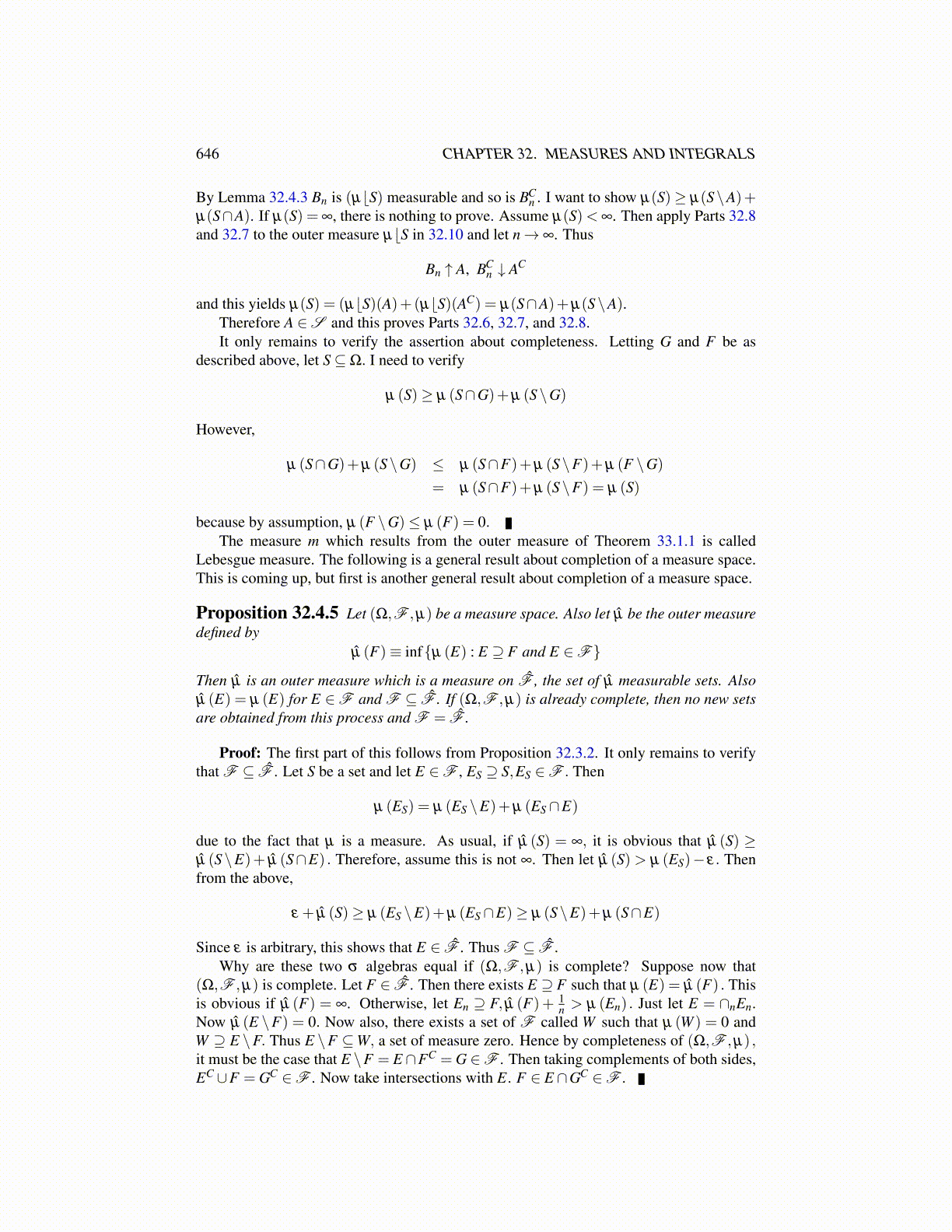
646 CHAPTER 32. MEASURES AND INTEGRALS
Proof: Let
s(ω) =n
∑i=1
α iXAi(ω), t(ω) =m
∑i=1
β jXB j(ω)
where α i are the distinct values of s and the β j are the distinct values of t. Clearly as+btis a nonnegative simple function because it has finitely many values on measurable sets. Infact,
(as+bt)(ω) =m
∑j=1
n
∑i=1
(aα i +bβ j)XAi∩B j(ω)
where the sets Ai ∩B j are disjoint and measurable. By Lemma 32.7.2,∫as+btdµ =
m
∑j=1
n
∑i=1
(aα i +bβ j)µ(Ai ∩B j)
=n
∑i=1
am
∑j=1
α iµ(Ai ∩B j)+bm
∑j=1
n
∑i=1
β jµ(Ai ∩B j)
= an
∑i=1
α iµ(Ai)+bm
∑j=1
β jµ(B j)
= a∫
sdµ +b∫
tdµ .
32.8 The Monotone Convergence TheoremThe following is called the monotone convergence theorem also Beppo Levi’s theorem.This theorem and related convergence theorems are the reason for using the Lebesgueintegral. If limn→∞ fn (ω) = f (ω) and fn (ω) is increasing in n, then clearly f is alsomeasurable because
f−1 ((a,∞]) = ∪∞k=1 f−1
k ((a,∞]) ∈ F
Theorem 32.8.1 (Monotone Convergence theorem) Let f have values in [0,∞] andsuppose { fn} is a sequence of nonnegative measurable functions having values in [0,∞]and satisfying
limn→∞
fn(ω) = f (ω) for each ω.
· · · fn(ω)≤ fn+1(ω) · · ·
Then f is measurable and ∫f dµ = lim
n→∞
∫fndµ.
Proof: By Lemma 32.6.2
limn→∞
∫fndµ = sup
n
∫fndµ
= supn
suph>0
∞
∑k=1
µ ([ fn > kh])h = suph>0
supN
supn
N
∑k=1
µ ([ fn > kh])h
= suph>0
supN
N
∑k=1
µ ([ f > kh])h = suph>0
∞
∑k=1
µ ([ f > kh])h =∫
f dµ.